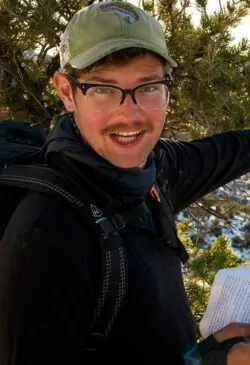The Ultimate Utah National Parks Road Trip
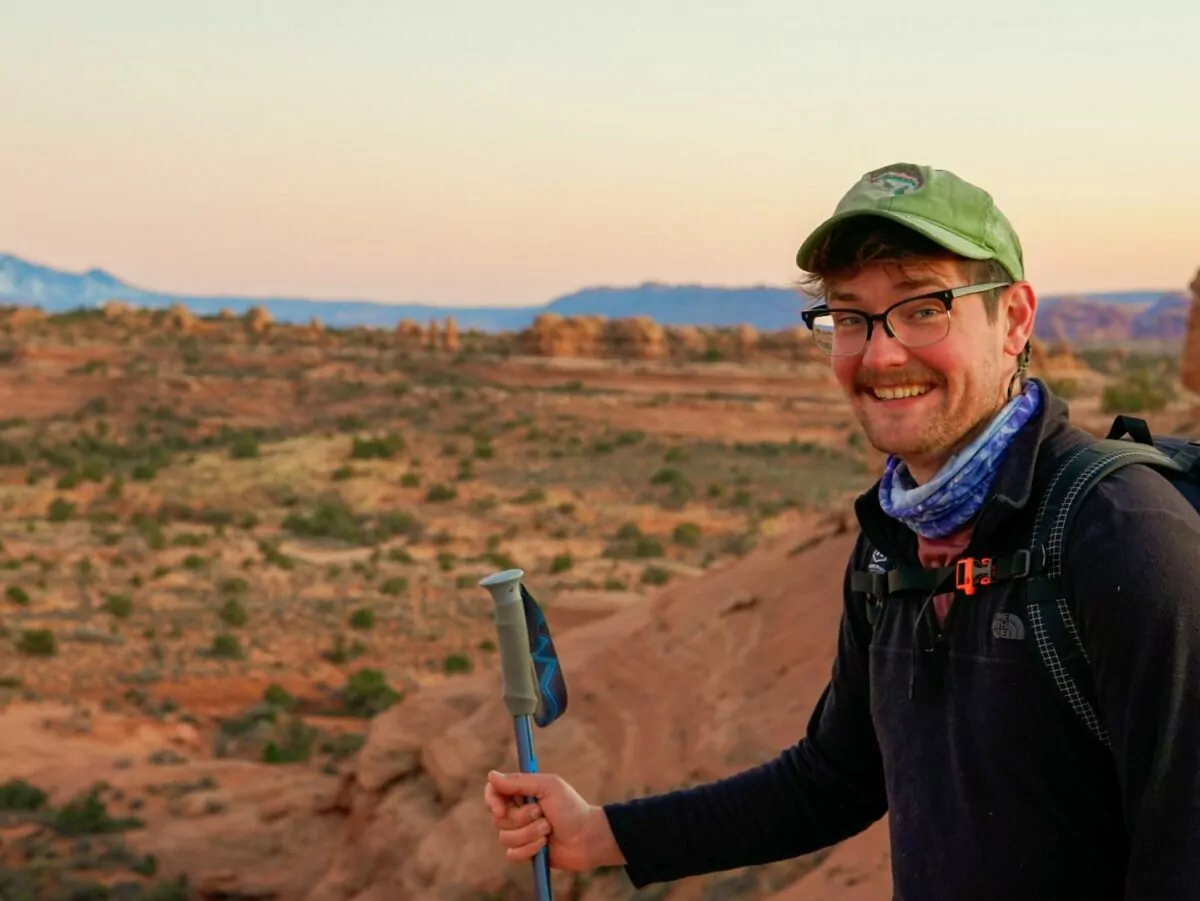
The ultimate Utah National Parks road trip isn’t merely about reaching destinations, it’s journey embracing the freedom of the desert and immersing oneself in the raw aspect of the landscape. With every mile traveled, a tapestry unfolds, inspiring awe and wonder. Utah stands as a true paradise for those yearning to lose themselves in a land unlike any other on Earth.
My own time in Utah began while traveling cross country in my beat-up old Astrovan, headed to the southern terminus of the Pacific Crest Trail from my home in Florida. Spending four months as a nomad, my voyage spanned from the sandy shores of the East Coast to the craggy expanse of the American West. Yet, it was Utah that captivated my soul, and where I spent well over half my time on that trip.
Since then, I’ve returned every spring season. Including later hiking the Hayduke Trail, a 700+ mile trek spanning the entirety of Utah from Arches to Zion, passing through every National Park and even detouring through the Grand Canyon. Here, I share my highlights and must-sees scattered throughout this grand “flyover” state.
Choosing your route
This is my ultimate Utah National parks road trip, refined by multiple seasons of poking around in the sand, but remember, it’s your adventure. For the sake of this route, I recommend kicking off the trip near Grand Junction, Colorado, and traveling linearly from east to west, finishing up near Zion National Park.
Utah Mighty Five National Parks Tour
While we have extensive articles on each of Utah’s National Parks and why you should visit, this guide fills in the blank spots on the map and highlights destinations around the heavy hitters of southern Utah. Whether you’re out for a week seeking highlights or a season stopping at every pullout for “just one more photo,” feel free to mix and match, add and subtract. After all, the best road trips are about embracing spontaneity and following your heart.
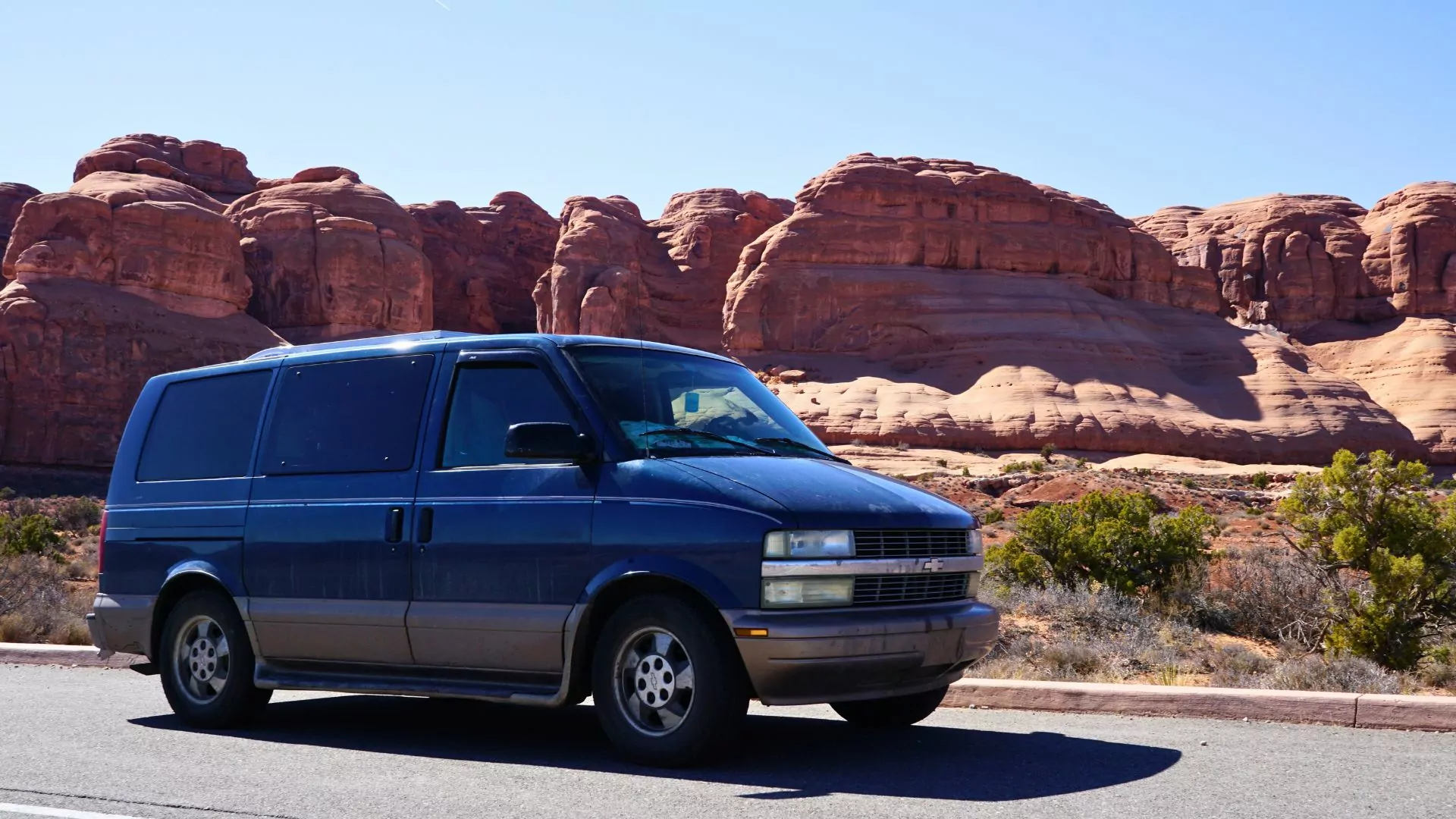
When to go
When are we taking this trip? A very important question.
Winter and summer can be extreme in these harsh environments, so the best times to visit Utah are either spring or fall. While most people visit these National Parks in the heat of summer, I’d recommend the cool and vibrant spring time. The best time of year to enjoy this Utah National Parks road trip is March through May, although October through November is quite pleasant as well. Any earlier and we’ll be shivering in our sleeping bags and feeling snow on our toes. Any later and we’ll be hiding in the shade as the canyons turn into an oven around us.
Pro tip: Try to avoid Moab during Easter Weekend as this is when Easter Jeep Safari, a massive off-roading event, takes place. Every camp within an hour of town is usually mobbed as the air thrums with the growl of off-road rigs day and night.
Following Leave No Trace Principles
The desert environment is full of exceptionally fragile flora and fauna that can take hundreds of years to grow. It is paramount that visitors tread lightly, staying on established trails and roads to avoid damaging cryptobiotic living soil crusts.
Cryptobiotic soil (crypto meaning “hidden” and “biota” meaning life) is a complex matrix of cyanobacteria, lichens, algae and fungus that help hold sand in place, preventing erosion and giving life a chance to grow.
Appreciate wildlife and rock art from afar, and please refrain from touching either. Resist the urge to turn these delicate arches into your adult jungle gym, nature already undergoes significant transformation without our help. Consider future generations while visiting Utah, and help to preserve it.
Leave No Trace principles are especially important in this delicate ecosystem. In the desert environment, human waste is a serious issue. Use toilet facilities whenever you can. When these are not available, all solid waste, including toilet paper, must be packed out in WAG bags. WAG bags are specially made solid waste disposal bags that are strongly encouraged and sometimes required while recreating in a desert environment.
Visitors can find WAG bags at gear shops in town and visitor centers in the National Parks. It is our collective responsibility to keep these parks clean and to provide sustainable outdoor recreation – do your part!
On the Road
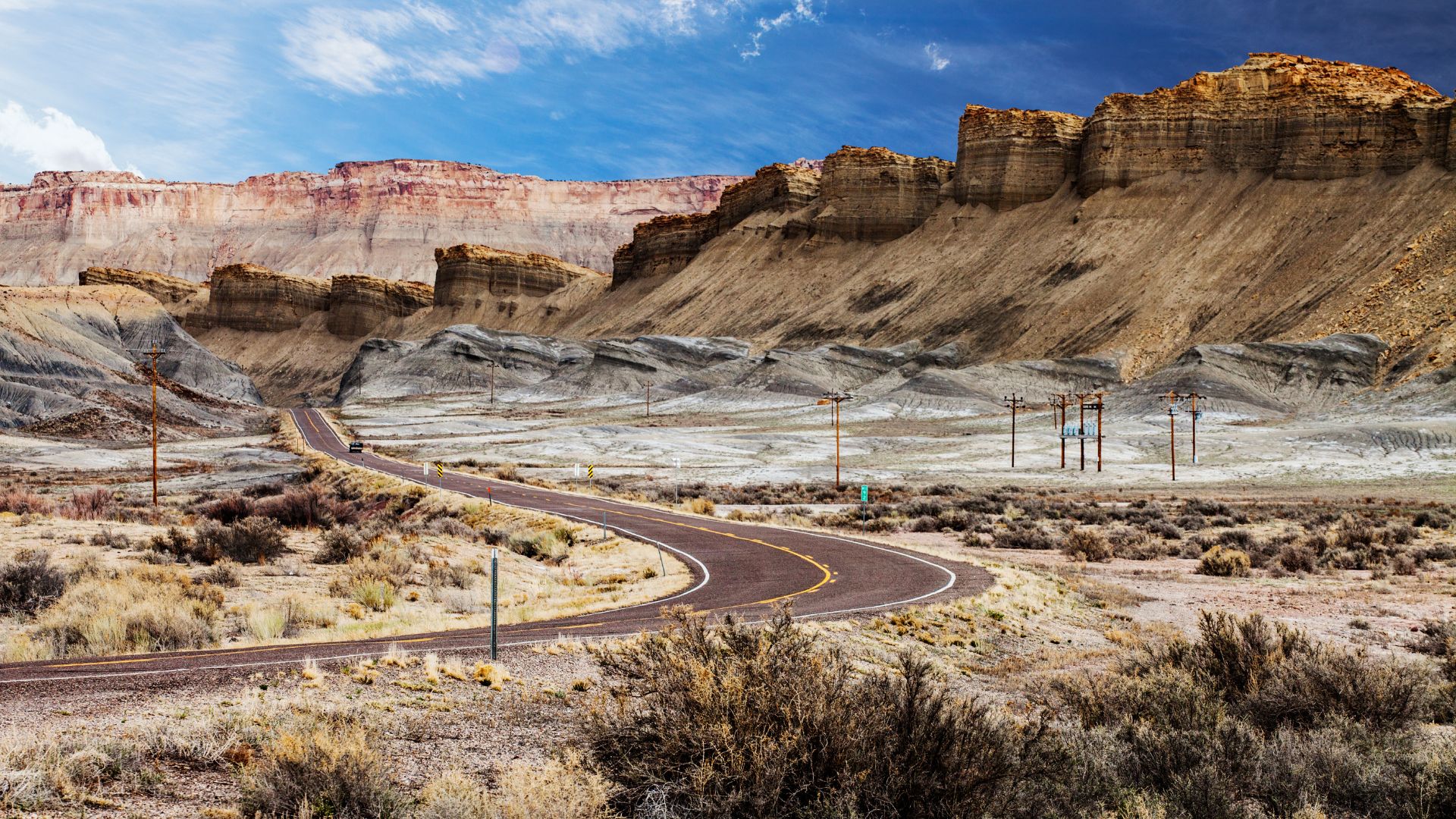
Stop 1: Colorado National Monument
Our journey starts in Grand Junction, Colorado, just before crossing into Utah. I know what you’re thinking: “Wait, that’s not Utah.” Trust me, we’ll get there. Sit back and enjoy the ride.
Just before reaching the proud “Welcome to Utah” sign along I-70, you’ll pass by the lesser-known Colorado National Monument. Situated near Grand Junction in western Colorado, this monument showcases impressive sandstone formations and formidable desert towers.
Drive along Rim Rock Drive, which offers access to various short, mild trails leading to overlooks with unbeatable views of the surrounding Colorado Plateau. From the towering spires of Independence Monument (keep an eye out for climbers lounging on the summit) to the expansive views of Monument Canyon, Colorado National Monument offers a grand introduction to the Colorado Plateau.
Camping options are available at the Monument, but I recommend hitting it during the day and heading West before stopping for the night.
Pro tip: Your America the Beautiful Parks Pass is valid here. If you don’t already have one, consider purchasing it to save on entrance fees throughout your time in Utah.
Stop 2: Castle Valley Via Hwy 128
Once we turn our tires West on I-70 again, we cross into Utah. Instead of taking the interstate all the way to Moab, we’ll opt for the scenic route along Hwy 128, following the Colorado River.
Take Exit 214 towards Cisco, then hang a left on Hwy 128, following signs for Moab. (Put Moab as your destination into Google Maps and add Dewey, UT as a stop along the way.)
Hwy 128 winds across sweeping cattle land before reaching the Colorado River. As we traverse beside the lifeline of the West, we’ll descend deeper into Castle Valley. The drive offers jaw-dropping views of sandstone towers, with the Colorado River lazily coiling beneath them and the immense, snow-capped La Sal Mountains rising behind. Words truly don’t do it justice; trust me, this is the perfect way to kick off our time in Utah. If you time it right, catching golden hour on the drive will treat you to some killer alpenglow on the mountains, arriving at camp just in time for sunset over the valley.
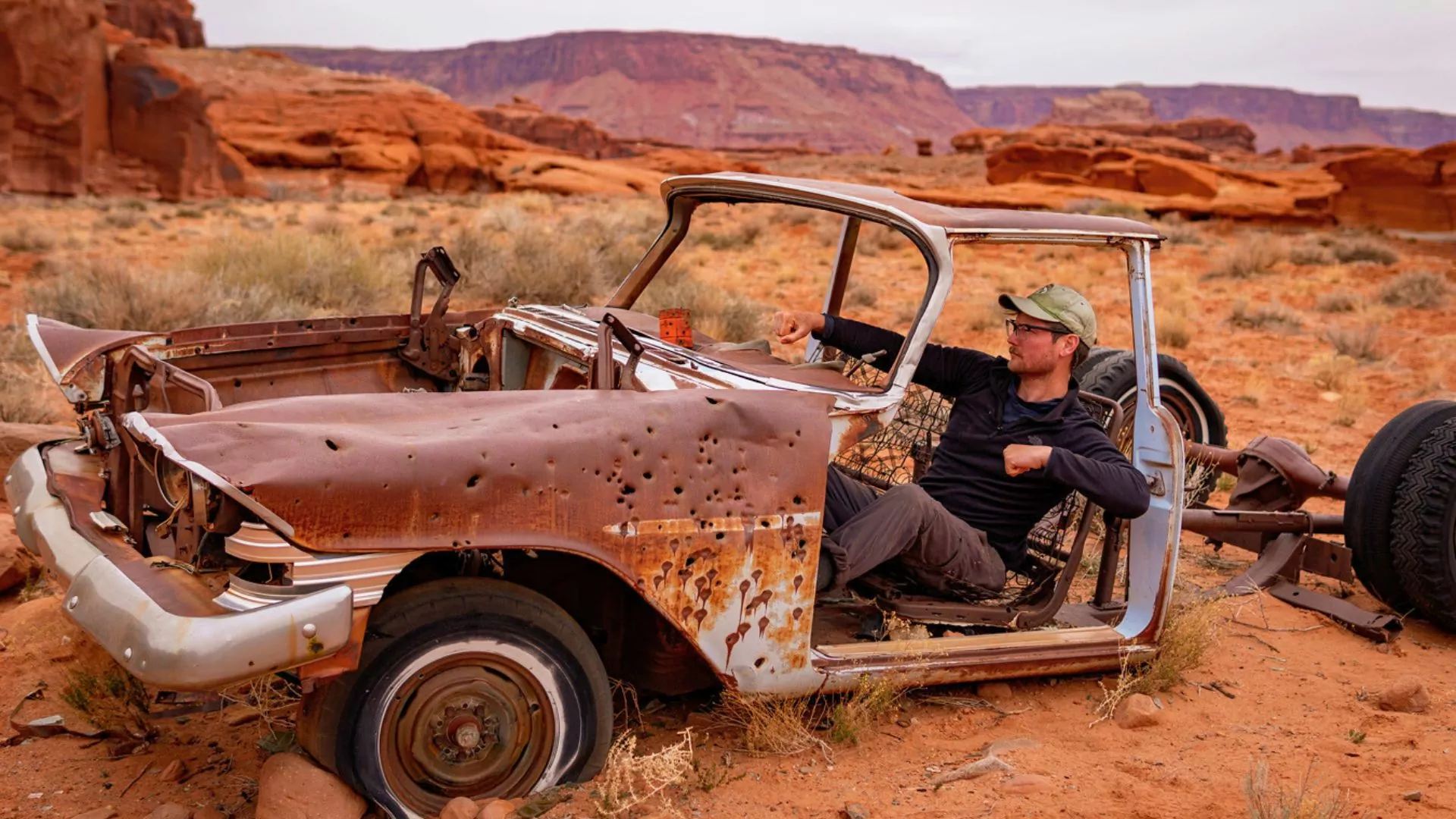
There are numerous established campsites along the Colorado maintained by the BLM, all on a first-come, first-served basis with small fees (~$20) for maintenance and waste removal. Favorites include Lower Onion Creek Camp or Fisher Towers Trailhead Camp, both offering phenomenal sunset views of Castle Valley and the iconic Fisher Towers.
Pro tip: You’ll need to bring your own water, but there are vault toilets available.
Stop 3: Moab, Utah and Milt’s Stop & Eat
Upon waking in Castle Valley, home of the gravity-defying Fisher Towers (which we can easily spend a morning exploring from the Fisher Towers Trailhead, located conveniently close by last night’s camp) we can keep heading west along Hwy 128, eventually finding ourselves back in civilization in the lively town of Moab, Utah
Nestled between the towering red rock cliffs of Arches National Park and the gaping chasms of Canyonlands National Park, Moab is a mecca for outdoor enthusiasts and nature lovers alike. This can act as our hub for the next few stops in Canyonlands and Arches, offering accommodations for every budget as well as resupply options.
For thrill-seekers, Moab is renowned for its world-class mountain biking trails, challenging rock climbing routes, and exhilarating Colorado River rafting trips. The nearby sandstone cliffs and rock formations provide the perfect playground for climbers of all skill levels, while the network of trails offers endless opportunities for hiking, trail running, and off-road vehicle exploration.
For those looking for a more laid-back experience, grab a massive burrito from Giliberto’s, a milkshake from Milt’s Stop & Eat, and go relax in the grass at Rotary Park. Kick your feet up before heading out to explore the surrounding natural wonders.
Pro tip: If looking for gear or a place to fill up on water, my recommendation is locally owned Gearheads Outdoors.
Stop 4: Arches National Park
You know Arches, I know Arches. Everybody loves Arches. While I could write an entire article extolling the virtues of this slice of heaven, Wildland already has an extensive Guide to Arches. This article includes everything you need to know for your visit, including camping, excursions, when to visit, and anything else you need to know.
Arches National Park is not just a destination, it’s an icon of the American Southwest. Among its many attractions, Delicate Arch stands out as the park’s crown jewel, captivating visitors with its graceful curvature and seeming fragility against the backdrop of the desert landscape.
While Delicate Arch may steal the spotlight, there’s much more to explore within Arches National Park. My personal favorite hike is the Double O Arch Loop, accessed via the Devil’s Garden Trailhead. This moderate to strenuous hike takes us on a journey past stunning rock formations and lesser-known arches before culminating at the impressive Double O Arch.
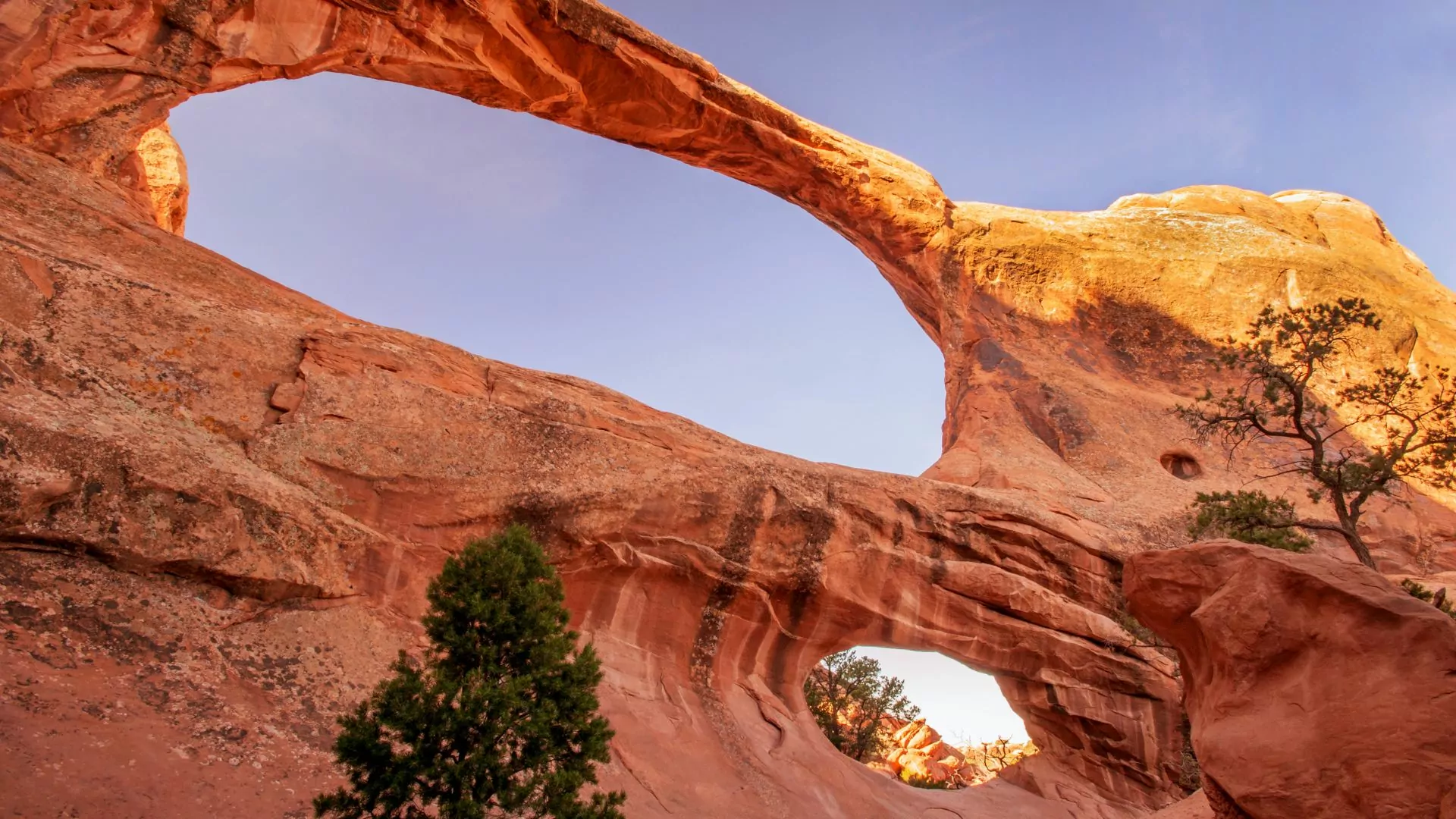
Whether embarking on a long hike or simply taking in the sensational scenery from the comfort of the car, a visit to Arches National Park is an unforgettable experience. Check it out and you’ll see why everybody raves about it.
Arches and Canyonlands Camping Tour
Stop 5: Canyonlands National Park
Up next on our Utah National’s Parks road trip is Canyonlands National Park. Canyonlands is a unique gem, essentially four national parks packed into one neat package. How they managed to squish all this terrain into a single park remains a mystery to me. For a comprehensive guide to this multifaceted land, be sure to check out Wildland’s Guide to Canyonlands National Park.
If you’re after sweeping views and easy access (just a 30-45 minute drive from Arches and Moab), the Island in the Sky district is for you. Perched atop a massive mesa, this section offers overlooks with stunning vistas of the surrounding canyons and the Colorado and Green Rivers below. Trails like the Mesa Arch Trail and the Grand View Point Trail lead to the rim of the mesa, providing glimpses into The Maze district. It’s the perfect area for a drive or a relaxing picnic, offering exceptional value for those on a time budget.
After touring Island in the Sky, we’ll venture into The Needles district (roughly 1.5 – 2 hours south of Moab) to discover towering rock spires, vibrant rock formations, and hidden slot canyons. Hikers can explore a network of trails winding through secluded alcoves and ancient petroglyphs. Be sure to stop at Newspaper Rock on the way in!
Popular routes like the Chesler Park Loop and the Joint Trail offer more adventurous treks for those seeking a challenge.
You can stay the night in Needles Campground (book in advance on Recreation.gov) or stay in one of the first come, first serve BLM camps found in Indian Creek Recreational Area located just outside the park leaving Needles. My favorites are the Super Bowl Camp or Hamburger Rock Camp.
Stop 6: Natural Bridges National Monument
Now that we’ve spent an indeterminate amount of time in and around Moab, Arches, and Canyonlands, it’s time to head west once again. But if you’re anything like me, you’ll prefer cruisey two-lane highways over interstates. We’re on a road trip after all – better enjoy driving!
Instead of retracing our steps north back to I-70 from Needles, let’s head south along Highway 191 and then east, just south of Blanding, to reach Natural Bridges National Monument.
Famous for its three natural bridges sculpted by the forces of erosion, Natural Bridges National Monument offers a window into the ancient geological processes that have shaped the landscape. Named Sipapu, Kachina, and Owachomo, these bridges can be admired from the road or up close by following the monument’s hiking trails. After the hustle and bustle of the Moab area, a visit here promises a welcome breath of tranquility.
Pro tip: If you’ve got extra time on your hands you should drive 45 minutes south to Goosenecks State Park and camp along the rim before heading north for our next stop.
Stop 7: Hwy 95 north via Hanksville
Prepare your peepers for genuinely one of the most beautiful scenic byways in Utah. If you weren’t convinced that Utah was drop dead gorgeous before, driving Hwy 95 from Natural Bridges to Hanksville will solidify this for you. Soak it all in, play some old cowboy music, and enjoy.
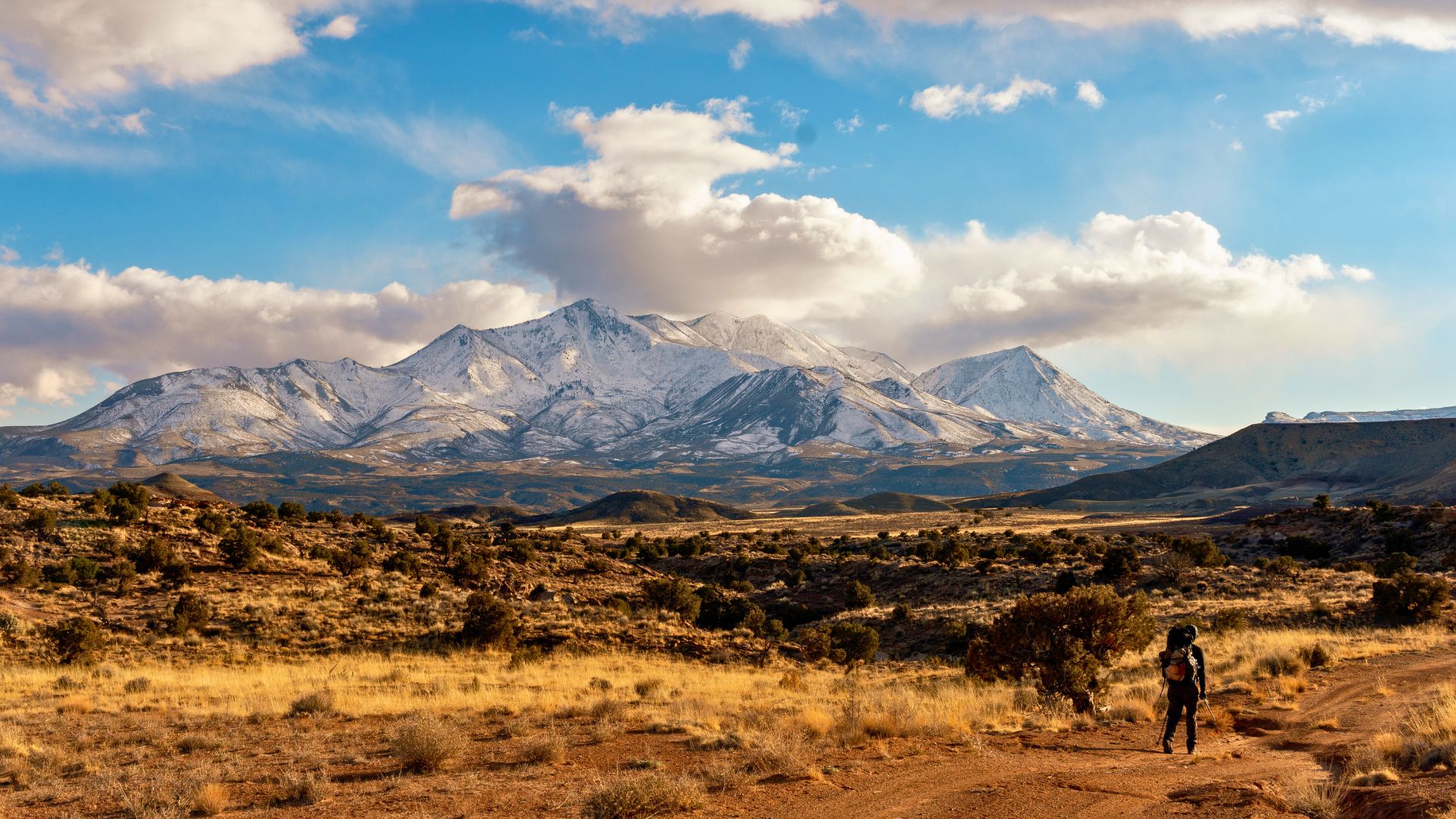
Shortly after passing the Henry Mountains on our left-hand side (the last mountain range to be explored in the contiguous US and one of two places wild buffalo live in Utah) we’ll arrive in Hanksville, population 171. Fill up on gas, grab a burger and a shake from Stan’s Burger Shack, and proceed to drive to Carl’s Critter Garden to enjoy your meal while taking in this weird little art exhibit. Next it’s time to head west out of town to Capitol Reef.
Stop 8: Capitol Reef National Park
Deep in the heart of Utah’s desert, Capitol Reef National Park protects a wealth of wilderness that stretches nearly 60 miles along the Waterpocket Fold formation of the Colorado Plateau. Visitors can explore the sinuous, boulder-filled canyon as they meld with monolithic sentinels of sandstone. Ranging from arid, seemingly lifeless stretches of rock to lush, cottonwood-filled oases with grass and flowers springing from blank walls.
For a more restful day, Capitol Reef also offers a unique historical significance showcasing the eras of humankind’s existence in Utah. In the same afternoon visitors can visit a whole town constructed by early Mormon settlers and petroglyphs left behind by the ancestral Paiute and Fremont Native Americans who inhabited this land at different times.
If you’re looking to go for a hike, Capitol Reef is a mecca for desert exploration. Boasting 20 natural sandstone arches, cooler summer temps, and slot canyons rivaling anything you’ll find in Zion or Arches, it’s ripe for adventure. Despite being deep in the backcountry and a full day’s trek, the Hall’s Creek Narrows surpass the majesty of Zion’s famous Virgin River Narrows and can’t be missed!
If we’re staying the night, Fruita Campground inside the park offers a front country oasis, just make sure to book up to six month in advance on recreation.gov. Alternatively, BLM Campgrounds can be found heading west out of the park along Hwy 12. I’d recommend Cedar Mesa Campground or Pleasant Creek Campground. While these campgrounds are first-come-first-served and do not require reservations, there are limited sites available. Plan on arriving in the early afternoon to ensure snagging a spot and enjoy a leisurely dinner among the pines.
Stop 9: Spooky and Peekaboo Slot Canyons
While this is the ultimate Utah National Parks road trip, let’s make sure we’re not missing out on any other magical destinations found out here in the desert.
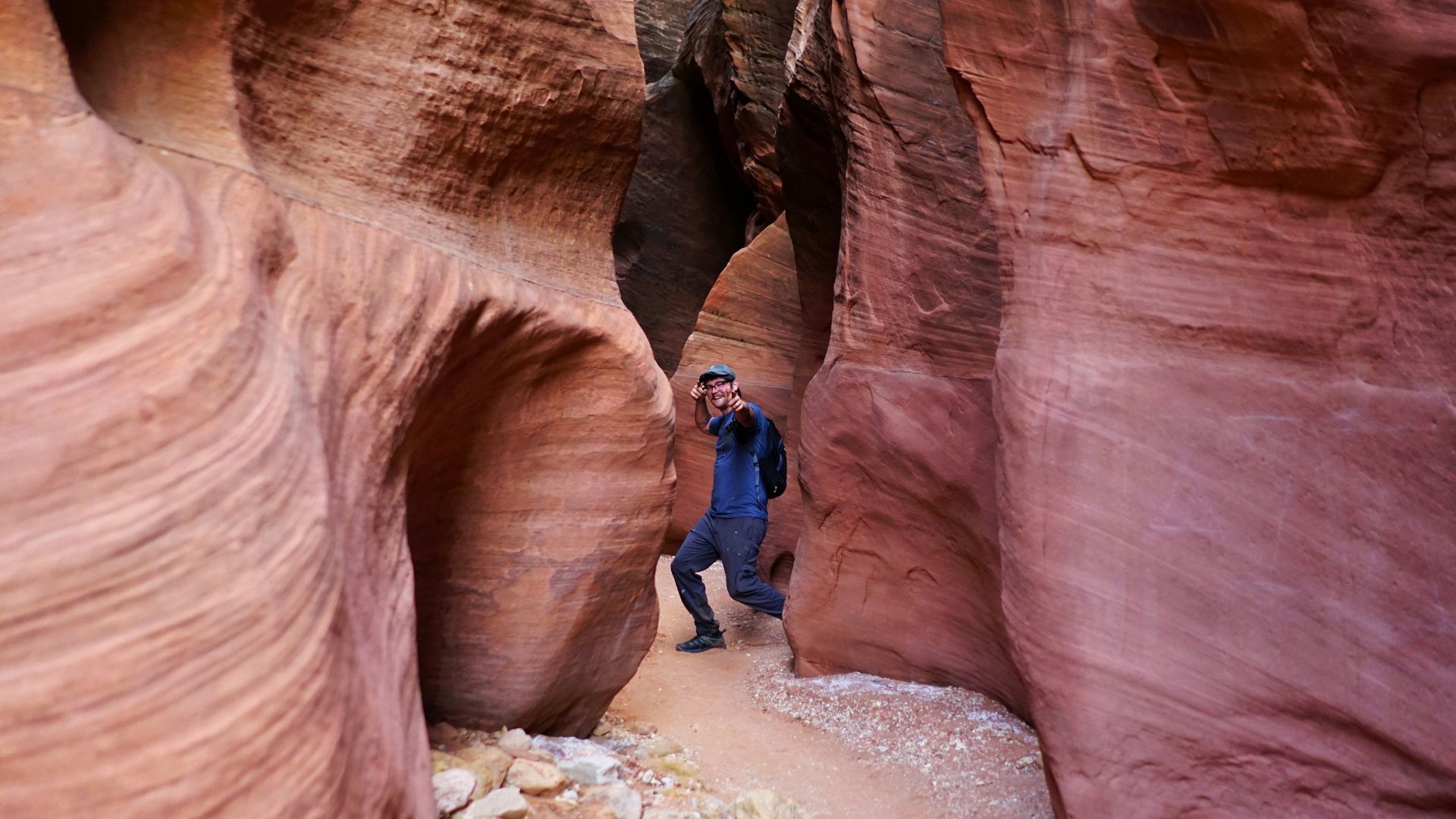
After leaving Capitol Reef, head west into the Grand Staircase-Escalante National Monument (Here’s a bit of geological history if you’re curious) along Hwy 12, passing the oddly placed Utah Flute Shop. This scenic bi-way takes us over a section of highway where we’ll feel like we’re driving along the spine of a great, stony beast north of Boulder, Utah.
Just a few miles before getting to Escalante, Utah, we’ll hang a left on Hole in the Rock Road and scoot roughly 26 miles to the Lower Dry Fork Trailhead. From there we can make a 6 mile loop of Spooky and Peekaboo Slot Canyons, some of the finest slot canyons in Utah.
Pro tip: Wildland Trekking offers a phenomenal guided tour of southwest Utah that includes this hike.
NOTE: Hole in the Rock Road can be quite washed out at times, and even in the best conditions can be an absolute wash board. Spooky and Peekaboo are a fantastic hike but should not be taken lightly. Flash flood danger exists in any tight narrow space like this. Do your research and be prepared!
After a day of exploration in some superb slot canyons, we’ll make our way back up Hole in the Rock Road and find dispersed camping right where the road meets back up with Highway 12. It’s true BLM dispersed camping, so find a previously impacted site amongst the juniper trees and enjoy the sunset.
Stop 10: Bryce Canyon National Park
Bryce Canyon National Park is a mesmerizing milieu of intricate rock formations known as hoodoos. These towering spires, sculpted by freeze-thaw cycles, wind, and erosion over millions of years, create a surreal and otherworldly atmosphere that is unlike anywhere else on earth.
But first, let’s pop into Escalante, Utah and enjoy my all-time favorite burger shack, Nemo’s (though pizza and brews at Escalante Outfitters also never fails). After indulging ourselves we can head west out of town to Bryce Canyon.
Here’s Wildland’s Guide to the Five Utah National Parks for more info on this park.
Note: Bryce canyon reaches elevations of over 9000ft. Depending on the snow year, large portions of the park can remain closed through April and even May. Check road conditions in advance and expect to feel winded.
As we explore Bryce Canyon, we’ll be treated to breathtaking vistas of the park’s expansive amphitheaters filled with rows of hoodoos glowing in hues of red, orange, and pink. Whether we’re hiking along the rim trails or descending into the canyon, every step offers a new perspective on the park’s stunning natural scenery. My personal favorite is the Fairyland Loop Trail, a strenuous 8 mile loop that flows from the rim to the bottom of the canyon and back up.
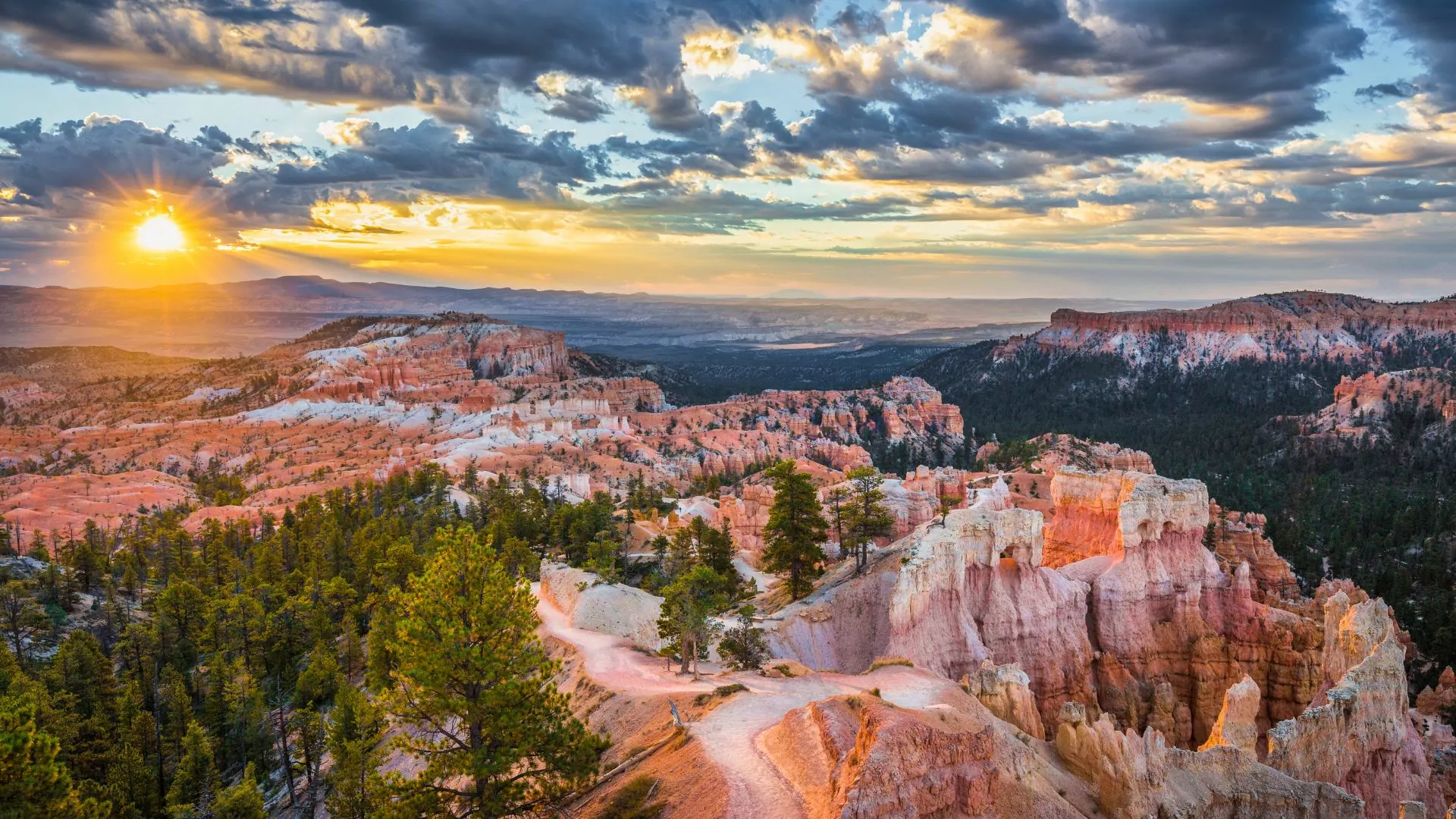
With its striking scenery and unparalleled views, Bryce Canyon National Park promises an unforgettable stop on our Utah National Parks road trip.
Pro tip: Camping in Bryce Canyon can seem a little intimidating at first, but is actually quite straight forward. There are two campgrounds, North Campground and Sunset Campground. Make sure to book in advance or make it your first priority when entering the park.
- North Campground is open year-round, reserve in advance May – October and first come first serve November – April.
- Sunset Campground is always first-come-first-served. However, it is only open April – October.
Stop 11: Zion National Park (and Big Al’s)
As the culmination of the ultimate Utah National Parks road trip, Big Al’s Burgers at the Junction stands is a fitting finale, a crown jewel in the treasure trove of greasy burger joints we’ve encountered along the way. Located in the heart of Kanab, Utah, we can grab a shake and gas here before heading back up Hwy 89 to hang a left at Carmel Junction and head to Las Vegas and beyond.
Oh – you wanted to see Zion, too?! I guess we can do that… Here’s a whole plethora of info we’ve written about Zion over the years.
Nestled in the corner of southwest Utah, Zion National Park’s sheer sandstone cliffs, verdant river valleys, and cascading waterfalls create unparalleled grandeur. There’s a reason it’s named after the Mormon kingdom of heaven (and called Mukuntuweap or “straight up land” by the indigenous Southern Paiute).
Upon entering Zion, we’re immediately greeted by the towering monoliths of the canyon walls, their vibrant hues shifting with the light of the sun. The Virgin River meanders through the canyon, carving its way through the rock over millions of years, leaving behind a maze of narrow slot canyons and serene pools.
Zion offers a varied selection of hiking trails, ranging from leisurely strolls along the riverside to challenging ascents up sheer cliffs. The iconic West Rim Trail to Angels Landing, with its dizzying heights and insane views, offers a thrilling challenge for those brave enough to tackle it (and lucky enough to snag a permit).
Alternatively, the Narrows beckons with its cool waters and towering walls, inviting hikers to wade through the river and explore its hidden depths. Wildland Trekking offers numerous guided tours in Zion, including day hikes and multi day adventures.
For a more relaxed experience, scenic drives and interpretive programs provide insights into the park’s rich natural and cultural history. Whether you’re gazing up at the towering cliffs from the valley floor or marveling at the views from the park’s overlooks, Zion National Park offers an unforgettable finale to any Utah National Parks road trip, a testament to the magnificence of the American West.
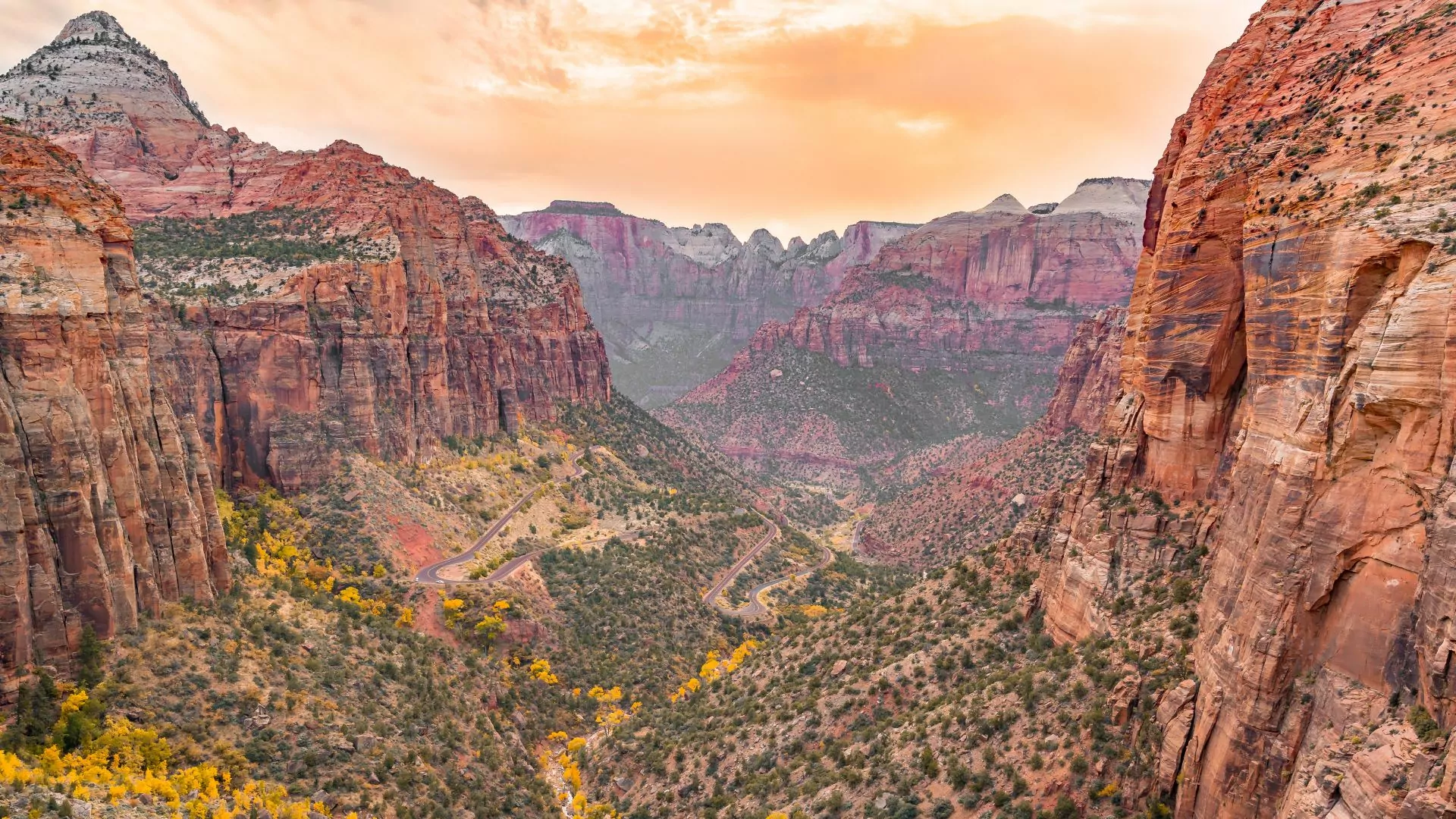
If you’re looking to stay in or near Zion for the night, we’ve got a few options.
Camping can be found at:
- Watchman Campground is found directly in the park near Springdale and reservations can be made up to six months in advance
- Lava Point Campground is found ~1 hour north near the Kolob Canyons section of the park and is open May – September. Reservations can be made on a rolling two-week basis
If you’d like a bed to rest your weary head then your best option is The Zion Lodge located directly in the main canyon. This offers easy access to the park’s hiking trails, as well as world class cuisine and the ability to drive your car into the main canyon of the park, normally reserved for shuttle buses.
The gateway town of Springdale also offers numerous hotels and lodging options.
Bonus stop! Snow Canyon State Park
Heading Home
As the sun sets on our winding journey through the ultimate sights of Utah, it’s not just the miles we’ve traveled but the memories we’ve made that will linger in our hearts.
Utah’s diverse and awe-inspiring terrain has offered us a glimpse into the ancient geological forces that have shaped the landscape over millions of years. From the towering cliffs of Capitol Reef to the hidden slot canyons of Grand Staircase-Escalante, each destination has revealed a new layer to savor.
Perhaps the most profound discovery of all that is hiding among the hoodoos and canyons is the sense of freedom that comes with exploring the vast expanse of the American West. As we bid farewell, we carry with us a renewed appreciation for the natural world and a sense of gratitude for the opportunity to experience its majesty.
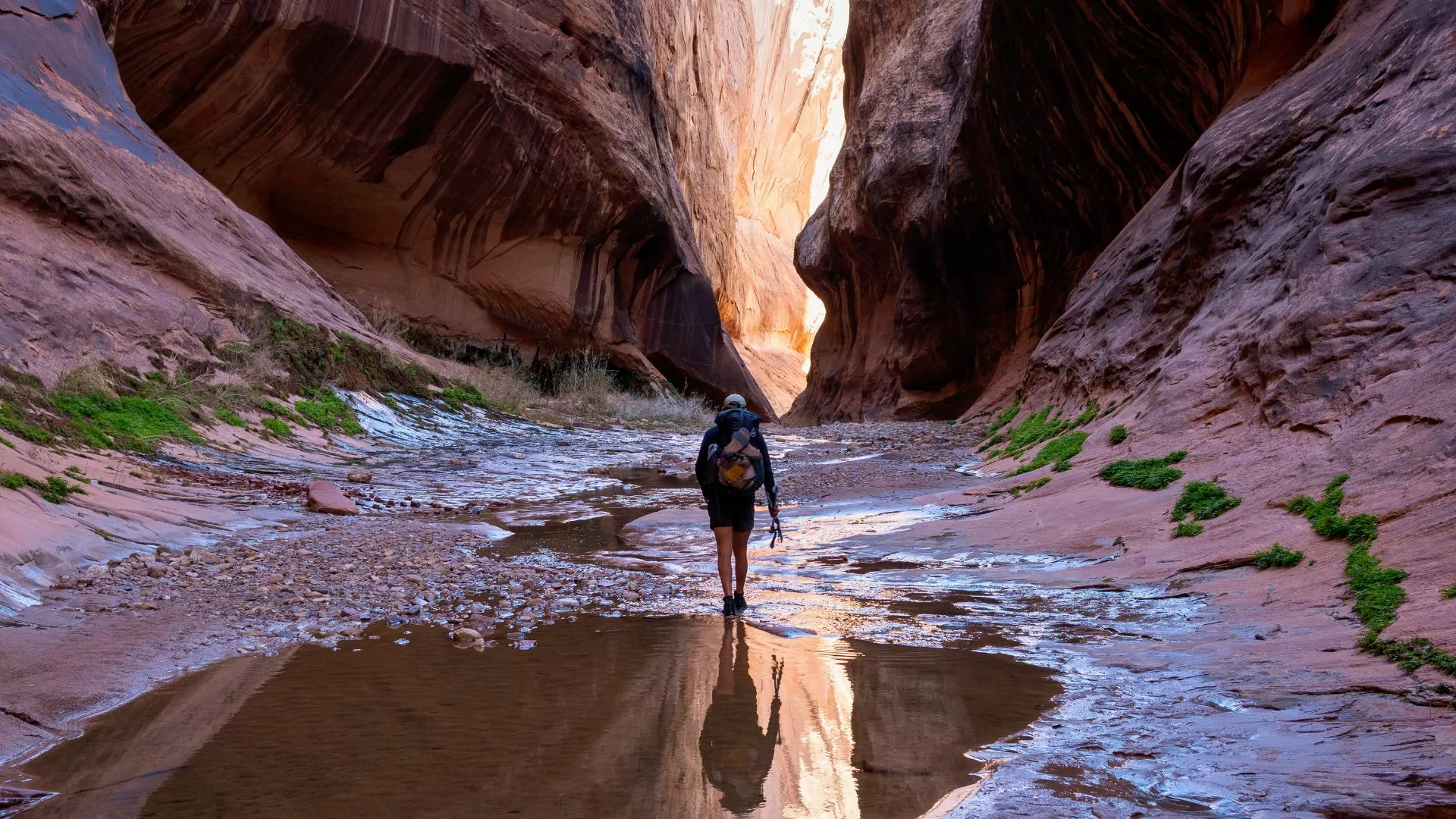
So, here’s to the open road, to the thrill of discovery, and to the endless possibilities that await around every bend. May our adventures continue to inspire us and may the timeless beauty of Utah’s landscapes forever remain etched in our memories.
Until next time, happy trails!



